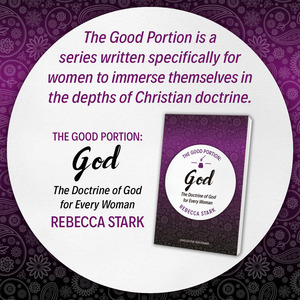Monday
Apr232007
Purposes of Christ's Death: Ephesians 2:14-16
 Monday, April 23, 2007 at 9:08AM
Monday, April 23, 2007 at 9:08AM This is another reposting from a series of posts examining the statements of purpose that scripture gives us regarding the death of Christ. You can find the other posts from this series by clicking on the purposes of Christ’s death label at the end of this post.
The text examined in this post is Ephesians 2:14-16:
For He Himself is our peace, who made both {groups into} one and broke down the barrier of the dividing wall, by abolishing in His flesh the enmity, {which is} the Law of commandments {contained} in ordinances, so that in Himself He might make the two into one new man, {thus} establishing peace, and might reconcile them both in one body to God through the cross, by it having put to death the enmity. (NASB)The purpose statement here is “so that in Himself He might make the two into one new man, {thus} establishing peace, and might reconcile them both in one body to God through the cross, by it having put to death the enmity.” In Christ’s death, God intended to bring two hostile groups together and to reconcile them to each other and to himself.
I suppose the first thing we need to do is determine who are the two groups referrenced. The context tells us that these are the Jewish people and the Gentiles.
Therefore remember that formerly you, the Gentiles in the flesh, who are called “Uncircumcision” by the so-called “Circumcision,” {which is} performed in the flesh by human hands— {remember} that you were at that time separate from Christ, excluded from the commonwealth of Israel, and strangers to the covenants of promise, having no hope and without God in the world. But now in Christ Jesus you who formerly were far off have been brought near by the blood of Christ. (vs. 11-13)The terms Gentiles, Uncircumcision, separate from Christ, excluded from the commonwealth of Israel, strangers to the covenants of promise, without God in the world, and formerly…far off all refer to those who were not part of the nation Israel—or the Jews, or the Circumcision.
The covenants (or the Law of commandments) served as a line of demarcation between the two groups, and was a source of enmity or hostility, because it excluded those who did not come under the umbrella of the nation Israel. Christ’s death, however, took away the hostility between the two groups by what the NASB calls “abolishing in His flesh the enmity, {which is} the Law of commandments {contained} in ordinances”. The dividing effects of the law —the enmity—is nullified in Christ’s death, because the new covenant established in Christ’s blood includes all those of faith, both Jew and Gentile. There is no longer a demarcation line based on national allegiance.
In the new order brought into being in by the death of Christ, there is not longer hostility between the Jews and all other people, but the two groups can be joined together to make “one new man”. This one new man is a new kind of corporate entity made up of all those–from the Jews and from the Gentiles—who are in Christ. Joining both Jews and Gentiles as one corporate group united in Christ establishes peace between the two formerly hostile groups.
Through the cross both groups are also reconciled “in one body” to God. The meaning of in one body is a bit unclear. It could mean the same thing that is meant when is says that the two groups are made into one new man, or it could mean that they are both united together with Christ’s one body in His death. The context could be used to support either one of these options. Either way, the point is that the groups are reconciled to each other and also reconciled to God through Christ’s death on the cross.
A little side note on the term barrier of the dividing wall in verse 14: Many commentators take this to be an allusion to the wall separating the Gentiles from the inner courts of the temple in Jerusalem. However, Leon Morris, in The Atonement: Its Meaning and Significance, says that “It would be too much to say that Paul is writing about this wall.” Whether this exclusionary wall is what Paul is referring to or not, that there was such a wall tells us something about the deep division between Jew and Gentile under the ordinances of the law.
One of the purposes of Christ’s death was to break down the division of hostility between the Jews and the Gentiles, to reconcile them to each other, gathering them into one unified entity, and to reconcile both Jew and Gentile together to God himself.



Reader Comments